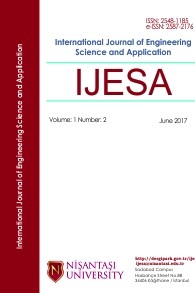Green Concrete Produced by Fly Ash and Silica Fume
Green Concrete Produced by Fly Ash and Silica Fume
___
- [1] C. Meyer, “The Greening of the Concrete Industry”, The 2013 World Congress on Advances in Structural Engineering and Mechanics (ASEM13), pp. 79-92, 2013.
- [2] V. M. Malhotra, Povindar K. Mehta, Pozzolanic and Cementitious Materials, Gordon and Breach Publishers, 1996.
- [3] B. Çelik, Effect of Binding Material Composition on Mechanical Properties of Concrete Subjected to Different Exposure Conditions, M. Sc. Thesis, Boğaziçi University, 2001.
- [4] M. Pagé, N. Spiratos, The Role of Superplasticizers in The Development of Environmentally-Friendly Concrete, CANMET/ACI International Symposium on Concrete Technology for Sustainable Development, 2000.
- [5] R. E. Davis, R. W. Carlson, J. W. Kelly, M. E. Davis, Properties of Cements and Concretes Containing Fly Ash, ACI Journal, Proceedings Vol. 33, No. 5, pp. 577-612, May-June 1937.
- [6] E. E. Berry, V. M. Malhotra, Fly Ash for Use in Concrete – A Critical Review, ACI Journal, Proceedings, Vol. 77, No. 8, pp. 59-73, March-April 1980.
- [7] R. L. Yuan, J. E. Cook, Study of a Class C Fly Ash Concrete, ACI SP-79, pp. 307-319, 1983.
- [8] V. M. Malhotra, G. G. Carette, P. C. Aitcin, Mechanical Properties of Portland Cement Concrete Incorporating Blast-Furnace Slag and Condensed Silica Fume, Proc. RILEM-ACI Symp. on Technology of Concrete When Pozzolans, Slags and Chemical Admixtures are Used, pp. 395-414, Monterrey, Mexico, 1985.
- [9] A. Benli, M. Karataş, Y. Bakir, An experimental study of different curing regimes on the mechanical properties and sorptivity of self-compacting mortars with fly ash and silica fume, Construction & Building Materials., Vol. 144, p552-562, Jul 2017.
- [10] S. Marinković, J. Dragaš, I. Ignjatović, N. Tošić, Environmental assessment of green concretes for structural use, Journal of Cleaner Production. Vol. 154, p633-649, Jun 2017.
- [11] O. Zobal, P. Padevět, Long-Term Development of Strength of Cement Paste with Fly Ash, Key Engineering Materials, Vol. 722, p151-156, 2017.
- [12] S. R. Kumar, K. A. Samanta, K. S. D. Roy, An Experimental Study on the Compressive Strength of Alccofine with Silica Fume Based Concrete, Applied Mechanics & Materials, Vol. 857, p36-40, 2017.
- [13] K. K. Senthamarai, L. Andal, M. Shanmugasundaram, An Investigation on Strength Development of Cement with Cenosphere and Silica Fume as Pozzolanic Replacement, Advances in Materials Science & Engineering, p1-5, Jun 2016.
- [14] ASTM International, ASTM C 138: Standard Test Method for Density (Unit Weight), Yield, and Air Content (Gravimetric) of Concrete.
- [15] ASTM International, ASTM C 143: Standard Test Method for Slump of Hydraulic-Cement Concrete.
- [16] ASTM International, ASTM C 39: Standard Test Method for Compressive Strength of Cylindrical Concrete Specimens.
- ISSN: 2548-1185
- Başlangıç: 2016
- Yayıncı: Nişantaşı Üniversitesi
Adaptive BDI Architecture for Multi-Agent Systems
Parameter Tuning Algorithms in Modeling And Simulation
Rabia KORKMAZ TAN, Şebnem BORA
Sliding Mode Control of Vehicle Suspension System under Different Road Conditions
Green Concrete Produced by Fly Ash and Silica Fume
Turbulent Flow in Agent-based Blood Vessel Model
Şebnem BORA, Sevcan EMEK, Vedat EVREN
Climate Control System For Cold Storage Depots
Murat BEKEN, H. Mücahit GÜNHAN, Eren AKBULUT, Tayfun ÇAPRAZ
Performance Comparison Between OpenCV Built in CPU and GPU Functions on Image Processing Operations
